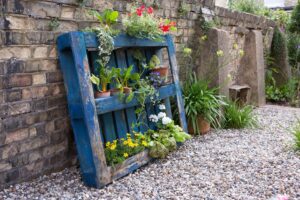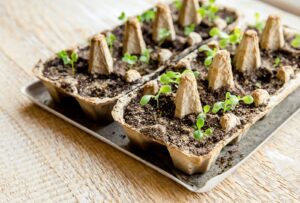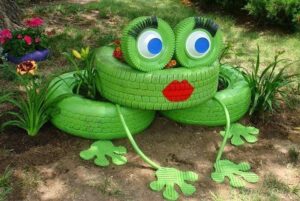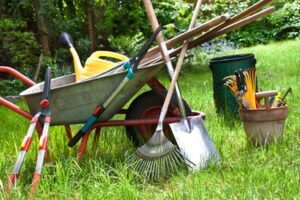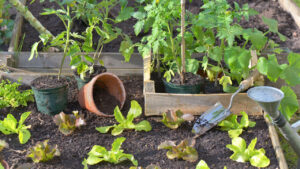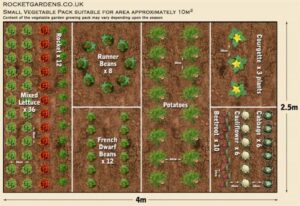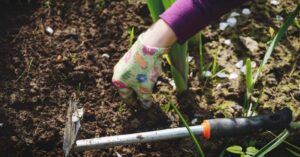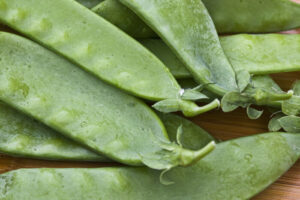Houseplants have taken the interior design world by storm, and 2024 is no exception. Whether you’re a seasoned plant enthusiast or a novice looking to add a touch of greenery to your home, this year’s trending houseplants offer something for everyone. From low-maintenance options to rare and exotic varieties, houseplants are more than just décor—they bring life, improve air quality, and provide a sense of calm. Let’s explore the top 10 trending houseplants of 2024 that are set to beautify homes around the world.
1. Fiddle Leaf Fig (Ficus lyrata)
The Fiddle Leaf Fig continues to be one of the most popular houseplants, and its reign isn’t ending in 2024. Known for its large, glossy leaves, this plant can add a dramatic touch to any room. It thrives in bright, indirect sunlight and requires regular watering. While it may need a little extra care in terms of humidity and light, the Fiddle Leaf Fig’s striking appearance makes it worth the effort.
Care Tips:
- Place in bright, indirect light.
- Water when the top inch of soil is dry.
- Keep away from drafts and maintain consistent humidity.
2. Monstera Deliciosa (Swiss Cheese Plant)
The Monstera Deliciosa, known for its unique, perforated leaves, continues to be a favorite among plant lovers. Its lush, tropical vibe makes it ideal for adding a jungle-like atmosphere to your space. This plant is relatively easy to care for and is great for beginners.
Care Tips:
- Bright, indirect sunlight is best.
- Water when the topsoil feels dry.
- Wipe the leaves regularly to keep them free of dust.
3. ZZ Plant (Zamioculcas zamiifolia)
If you’re looking for a low-maintenance, hardy houseplant, the ZZ Plant is for you. Known for its glossy, waxy leaves, the ZZ Plant can thrive in low-light conditions and requires minimal care. Its ability to tolerate neglect makes it a perfect option for busy homeowners or those without a green thumb.
Care Tips:
- Tolerates low light but thrives in bright, indirect light.
- Water sparingly—allow the soil to dry out completely between waterings.
- It’s drought-tolerant, so avoid overwatering.
4. Philodendron Birkin
Philodendrons have always been popular, but the Birkin variety, with its distinctive white-striped leaves, is stealing the spotlight in 2024. Its compact size and striking appearance make it ideal for small spaces like desks or shelves. This low-maintenance plant is easy to grow and adapts well to indoor environments.
Care Tips:
- Prefers bright, indirect sunlight but can tolerate low light.
- Keep the soil consistently moist but not waterlogged.
- Dust the leaves occasionally to enhance its natural beauty.
5. Snake Plant (Sansevieria trifasciata)
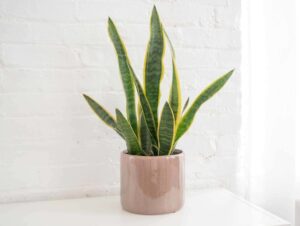
The Snake Plant, also known as “Mother-in-Law’s Tongue,” remains one of the most enduring houseplants due to its striking appearance and low maintenance needs. Its upright, sword-like leaves are not only visually appealing but also help to purify the air by removing toxins. This plant is practically indestructible and can survive in a variety of lighting conditions.
Care Tips:
- Thrives in both low light and bright, indirect light.
- Water sparingly—allow the soil to dry out between waterings.
- Avoid overwatering to prevent root rot.
6. Alocasia Polly (African Mask Plant)
With its bold, arrow-shaped leaves and dramatic vein patterns, Alocasia Polly is a standout houseplant for 2024. This tropical beauty requires a little more care than some other plants on this list, but its exotic appearance makes it well worth the effort. Its large, striking leaves add an artistic touch to any room.
Care Tips:
- Needs bright, indirect sunlight.
- Keep the soil consistently moist but avoid waterlogging.
- Mist regularly to maintain high humidity levels.
7. Pilea Peperomioides (Chinese Money Plant)
The Pilea Peperomioides, also known as the Chinese Money Plant or Pancake Plant, has been a social media favorite for the past few years and continues to trend in 2024. Its round, coin-like leaves make it a symbol of good luck and prosperity, making it a great addition to any home or office.
Care Tips:
- Prefers bright, indirect sunlight.
- Water when the soil is dry to the touch.
- Rotate the plant regularly for even growth.
8. String of Hearts (Ceropegia woodii)
The String of Hearts plant has gained massive popularity due to its delicate, heart-shaped leaves and trailing vines. Perfect for hanging baskets or shelves, this plant creates a cascading effect, adding a whimsical touch to any indoor space. It’s also fairly easy to care for and thrives in bright, indirect light.
Care Tips:
- Loves bright, indirect sunlight.
- Allow the soil to dry out between waterings.
- Prune regularly to control the length of the vines.
9. Calathea Orbifolia
Calathea Orbifolia is known for its broad, round leaves with beautiful silvery-green stripes, making it a stunning addition to any room. While Calatheas are known for being slightly finicky, the Orbifolia’s breathtaking appearance makes the extra care worth it. This plant is a great option for those looking to elevate their plant collection with something visually striking.
Care Tips:
- Prefers bright, indirect sunlight but can tolerate low light.
- Keep the soil consistently moist and mist regularly to maintain humidity.
- Avoid placing it in direct sunlight, which can scorch its delicate leaves.
10. Rubber Plant (Ficus elastica)
The Rubber Plant is another timeless favorite that’s trending in 2024 due to its glossy, deep-green leaves and low-maintenance care routine. It’s a versatile plant that can grow into a large indoor tree, making it an ideal choice for filling empty corners or adding a touch of greenery to larger spaces.
Care Tips:
- Thrives in bright, indirect light but can tolerate lower light conditions.
- Water when the top inch of soil is dry.
- Wipe the leaves regularly to maintain their shine.
Conclusion
Whether you’re looking for low-maintenance options or statement plants that can transform your living space, the top trending houseplants of 2024 offer something for every plant lover. From the bold leaves of the Fiddle Leaf Fig to the trailing vines of the String of Hearts, these plants not only elevate your interior design but also contribute to a healthier, more serene environment. By understanding the specific needs of each plant, you can ensure that your green companions thrive and continue to bring beauty and tranquility into your home. Happy planting!




